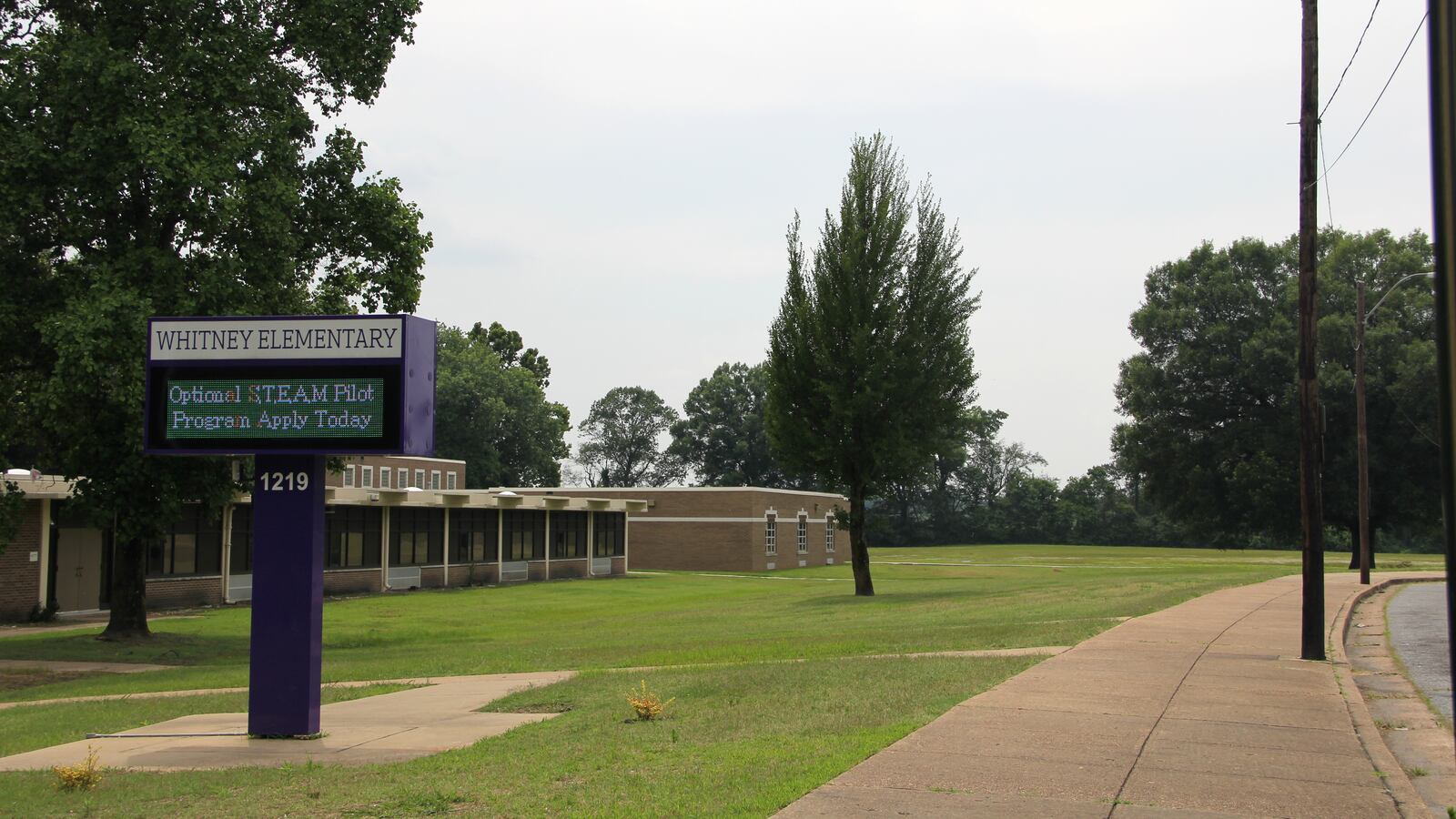Out of the thousands of codes and ordinances related to zoning matters in Memphis, none specifically prohibit a landfill from becoming the neighbor of a school where hundreds of children study and play most every day.
That opens up the door to interpretation for an application filed this spring by Memphis Wrecking Co., which is seeking to develop a landfill for construction debris next to Whitney Achievement Elementary School. The 440-student school serves children who are mostly black and from low-income families in the Frayser community of North Memphis.
Whitney sits in a neighborhood that is zoned for single-family residential use, which does not automatically allow landfills like the one being proposed by Memphis Wrecking Co. However, the company is requesting a waiver from the Shelby County Land Use Control Board, which will hold a public hearing on its application on June 9.
“When people hear about this, they think we’re wanting to place garbage right on top of the school, and that just simply isn’t the case,” said Steve Williamson, company president.
The proposed development is considered a Class III landfill, which is used for demolition waste such as unrecyclable concrete and other building materials like steel, lumber and bricks. It would not hold hazardous materials or household waste. According to the company’s website, it would be an odorless landfill with “superior appearance” and would serve as an economic asset to the community.
But Achievement Schools Executive Director Timothy Ware is appalled that there’s even discussion about whether a landfill should become a school’s neighbor.
“I can think of few messages more counter to our city’s goals of delivering high-quality public education to our children than placing a dump next to an elementary school,” Ware said.
It’s the second time the company has sought to place a landfill on the 32-acre site, having pulled its application last year following public outcry about its proposed location next to a school.
If approved this year, the development would be the second landfill located near the elementary school. Memphis Wrecking Co. already operates a 24-acre landfill adjacent to the proposed expansion but located further from the school and not visible from the campus. That landfill also holds mostly construction and demolition debris, especially unrecyclable concrete.
After pulling its application last summer, the company used the hiatus to incorporate changes in its proposal. Williamson says the new plan is designed to be more appealing to the surrounding community.
As proposed, the landfill would be located 662 feet from the school building and would include a 200-foot buffer zone of thick forest between the landfill’s eastern border and the school. Changes to the application include recently planted deciduous and evergreen trees designed to grow and visually eclipse a rising pile of waste material. The company has lowered the landfill’s eventual elevation by 40 feet, as well as reduced the slope. Once the landfill is filled to capacity, covered with two and half feet of dirt and seeded, the company also would donate an existing house on the property to the Frayser community for whatever purpose is deemed appropriate.
Under the revamped plans, children walking to school would not be able to see the landfill, according to company planner Brenda Solomito. “It’s important to us to make sure that the visual corridors and focal points for Whitney were designed so that you could not see in on the school side,” she said.
Visuals are only one of many concerns for the landfill’s opponents, however. Ware worries about possible air and soil contamination resulting from the dumping of unrecyclable concrete, while Solomito adamantly denies that will happen. A clay liner would be installed to separate the waste from the soil. The water table lies more than three football fields below the landfill. The proposed site is also flanked by by ground water monitoring wells.
“Concrete breaks down into sand and rocks, basically. That’s not a threat, especially when it’s contained by a clay liner,” Solomito said.
Company leaders say they have planned measures to address every possible community concern, but Ware cites one exception — the psychological impact of having a waste site next to a space where children learn.
“It contaminates the collective psyche of our community,” Ware said. “It says, ‘This is where our trash belongs.’”
"It contaminates the collective psyche of our community."
Tim Ware, Achievement Schools
Whitney Achievement Elementary School is located in a former blue-collar neighborhood that is now one of Memphis’ most economically depressed areas. Almost every student at Whitney is considered economically disadvantaged, and more than 96 percent are black, according to the Tennessee Report Card.
Officials with Memphis Wrecking argue that the landfill expansion will create jobs, increase tax revenue and lower city disposal costs, saving taxpayers money. Williamson notes that, before his company purchased the site, it featured an outdoor adult movie theatre and a liquor store.
“If anything, this is an improvement over outdoor pornography,” he said.
Memphis Wrecking and Solomito Land Planning are scheduled to host a neighborhood meeting on the proposal at 6 p.m. on Thursday at Impact Baptist Church & Ministries in Frayser.

